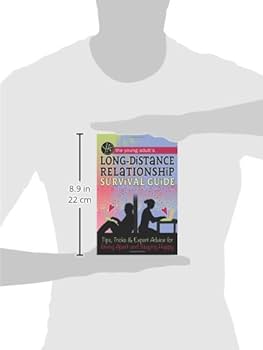Long Distance Relationship Problems Pdf
Dealing with long distance relationship problems can be challenging, and finding a PDF with effective solutions is essential for many couples. Understanding the common issues and learning how to overcome them can help improve the relationship’s dynamics and maintain a strong connection despite the physical distance.
Long distance relationships often come with their share of unique struggles. Lack of physical closeness, communication difficulties, and feelings of loneliness are common obstacles that many couples face. Fortunately, there are practical and helpful methods available in PDF format that can provide guidance and support for overcoming these challenges.
By addressing these issues head-on, couples can strengthen their bond and foster a healthy and fulfilling long distance relationship. We’ll explore the common problems in long distance relationships and provide valuable insights from PDF resources to help navigate through them.

The Challenges Of Long Distance Relationships
Trust Issues
Communication Barriers
Emotional Disconnect
Understanding Trust Issues In Long Distance Relationships
Building Trust
In long-distance relationships, building trust is essential. This can be achieved through open and honest communication, respecting each other’s boundaries, and being reliable and consistent. It’s important to invest time in getting to know each other’s lives, friends, and families, as well as sharing experiences and creating shared memories. By demonstrating transparency and reliability, a strong foundation of trust can be established.
Insecurity And Misunderstandings
Unfortunately, long-distance relationships can be prone to insecurities and misunderstandings. When you’re not physically together, it’s easy to misinterpret intentions or feel uncertain about the other person’s feelings. This can lead to unnecessary conflicts and doubts. By openly expressing emotions, addressing fears and insecurities, and actively listening and empathizing with one another, these misunderstandings can be minimized. It’s important to recognize that insecurity and misunderstandings are normal in such relationships, but they can be overcome through patience and understanding.
Overcoming Communication Barriers
Long distance relationships can face numerous challenges, but one of the most significant barriers is often communication. Overcoming communication barriers is essential for maintaining a healthy and thriving long-distance relationship. In this section, we will discuss effective strategies and tools to enhance communication, as well as the importance of setting clear expectations.
Effective Communication Tools
When it comes to long-distance relationships, leveraging effective communication tools can make a world of difference. Here are some tools that can help bridge the gap and facilitate seamless communication:
- Video calls: Maintaining face-to-face contact through video calls can help forge emotional connections and reduce feelings of distance.
- Messaging apps: Utilize apps like WhatsApp, Telegram, or Skype for quick and constant communication, allowing for real-time exchanges.
- Virtual date nights: Schedule regular virtual dates to enjoy activities together and nurture your bond.
Setting Clear Expectations
Communication in long-distance relationships can be more effective when both partners have a shared understanding of what they expect from each other. Setting clear expectations ensures that both parties are on the same page and avoids misunderstandings. Here are some key elements to consider when outlining expectations:
- Communication frequency: Agree on how often you’ll communicate to minimize surprises and alleviate anxiety.
- Visits: Discuss how frequently visits will occur and how you both feel about this aspect of the relationship.
- Intimacy: Understand each other’s emotional needs and establish how you’ll nurture intimacy despite the distance.
Managing Emotional Disconnect
Managing Emotional Disconnect in a long-distance relationship can be challenging, leading to feelings of emptiness and frustration. Despite physical distance, it’s crucial to maintain emotional intimacy and find effective ways to cope with loneliness. In this section, we explore strategies for fostering emotional connection and dealing with the emotional strains of being apart.
Maintaining Emotional Intimacy
In a long-distance relationship, maintaining emotional intimacy becomes paramount for keeping the bond strong. Regular communication through video calls, phone calls, and text messages helps bridge the emotional gap. Additionally, setting aside dedicated time for meaningful conversations and sharing personal experiences can bolster the emotional connection.
Coping With Loneliness
Loneliness is a common challenge in long-distance relationships. Encouraging your partner to share their feelings honestly and openly can create a sense of mutual understanding. Engaging in solo activities, pursuing hobbies, and connecting with friends and family can also help alleviate feelings of solitude.
Psychological Impact Of Long Distance Relationships
Long distance relationships can take a toll on individuals, not just physically but psychologically as well. The prolonged separation, lack of physical intimacy, and constant sense of longing can have a significant impact on the mental well-being of individuals in such relationships. Understanding the psychological impact of long-distance relationships is crucial in addressing the challenges that come with it.
Stress And Anxiety
Long distance relationships often lead to heightened levels of stress and anxiety. The uncertainty of the future, limited face-to-face communication, and the constant fear of growing apart can all contribute to these feelings. Individuals may experience on-edge emotions and feel overwhelmed by the constant mental and emotional strain of maintaining the relationship from a distance.
Impact On Mental Health
The impact of long-distance relationships on mental health can be significant. Feelings of loneliness, isolation, and depression are common experiences for individuals in long-distance relationships. The lack of physical presence of a partner can lead to a sense of emptiness and emotional distress, which can in turn impact overall mental well-being.
Coping Mechanisms
Implementing healthy coping mechanisms is essential for managing the psychological challenges of long-distance relationships. Individuals can engage in regular communication through video calls, messages, and emails to maintain emotional connection. Practicing self-care and establishing a support system can provide necessary emotional stability. Moreover, seeking professional counseling or therapy can offer valuable support in navigating the mental strain of a long-distance relationship.
Dealing With Stress And Anxiety
Learn how to cope with stress and anxiety in a long-distance relationship with our helpful PDF guide. Discover practical tips and strategies to manage your emotions and maintain a healthy connection with your partner, no matter the distance. Download our resources and take a proactive approach to nurturing your relationship.
Understanding The Impact On Mental Health
Long-distance relationships can take a toll on mental health, causing various challenges that can lead to emotional distress and anxiety. Understanding the impact of long-distance relationship problems on mental health is crucial for individuals navigating these complex dynamics. In this section, we’ll delve into the significant effects on mental well-being and explore strategies for mitigating these challenges.
Depression And Isolation
The geographic separation inherent in long-distance relationships can contribute to feelings of depression and isolation. Lack of physical proximity and face-to-face interaction can exacerbate emotional distress, leading to symptoms of depression. This sense of isolation can manifest in individuals feeling disconnected from their partner and support networks. These factors, coupled with the challenges of maintaining a long-distance relationship, can significantly impact mental well-being.
Emotional Resilience And Support Systems
Building emotional resilience is essential for individuals in long-distance relationships, as it enables them to navigate the challenges and uncertainties that arise. Creating strong support systems, encompassing friends, family, and mental health professionals, can provide crucial avenues for emotional sustenance and guidance. Establishing open lines of communication and seeking professional support when necessary can contribute to greater emotional resilience in the face of long-distance relationship strains.
Navigating Practical Challenges In Long Distance Relationships
Long distance relationships come with their own set of challenges, and navigating practical issues can be particularly demanding. It’s common for partners in long distance relationships to face obstacles such as time zone differences, financial strain, and limited physical intimacy. Understanding and addressing these challenges is crucial to maintaining a healthy and successful long distance relationship.
Time Zone Differences
Dealing with time zone differences is one of the most significant challenges in long distance relationships. It can make scheduling regular communication a daunting task, leading to feelings of disconnect and frustration. Establishing a mutually convenient communication schedule and making the most of overlapping free time is essential to bridge this gap.
Financial Strain
Financial strain is another common issue in long distance relationships, brought on by the costs of travel and communication expenses. Partners may need to carefully budget and plan visits to maintain the relationship. Open communication about financial constraints and finding cost-effective ways to stay connected is vital in alleviating this pressure.
Limited Physical Intimacy
Limited physical intimacy can add emotional strain to long distance relationships. Finding ways to maintain intimacy and affection despite the physical distance is essential for keeping the connection strong. This might involve creative and thoughtful gestures, such as surprise visits or sending personal mementos to each other.
Managing Time Zone Differences
Long distance relationships can be challenging, especially when it comes to managing time zone differences. The need to find a balance and effectively communicate across different time zones is vital for the success of the relationship. Understanding and addressing this aspect can help in overcoming various obstacles that may arise. In this section, we will delve into the key strategies for managing time zone differences in long distance relationships.
Scheduling Quality Time
One of the crucial aspects of managing time zone differences in long distance relationships is scheduling quality time. To ensure that both partners can connect, it is essential to find overlapping time slots that work for both parties. Utilizing tools such as online calendars or scheduling apps can aid in coordinating and planning regular virtual dates or conversations. Establishing a routine for communication can help in maintaining a sense of connection despite the distance.
Flexibility And Understanding
Flexibility and understanding are paramount in navigating time zone differences. Both partners need to be adaptable and willing to adjust their schedules to accommodate each other’s availability. Open and honest communication about each other’s time constraints and commitments is crucial. This can assist in fostering a supportive and understanding dynamic, ensuring that both individuals feel valued and respected despite the physical separation.
Overcoming Financial Strain
Overcoming financial strain in a long-distance relationship can often be a significant challenge, yet finding ways to manage and alleviate the burden is crucial for the health and sustainability of the partnership. Below we discuss key strategies for addressing financial strain in a long-distance relationship, focusing on practical steps to overcome this common hurdle.
Budgeting And Planning
Creating a clear and realistic budget is a fundamental step in overcoming financial strain in a long-distance relationship. Establishing a detailed financial plan can help both partners gain a better understanding of their individual and shared expenses, ultimately minimizing potential conflicts and enabling better financial management.
Supportive Financial Strategies
Implementing supportive financial strategies is essential for effectively mitigating financial strain in a long-distance relationship. Utilizing tools such as money transfer apps, joint bank accounts, or shared expense-tracking applications can streamline financial interactions and alleviate the burden of managing separate finances from afar.
Finding Alternatives For Physical Intimacy
In a long-distance relationship, physical intimacy can often be a significant challenge. The lack of physical closeness and touch can leave partners feeling disconnected and longing for ways to bridge the gap. Finding alternatives for physical intimacy becomes crucial to maintain a fulfilling and meaningful relationship.
Creative Ways To Stay Connected
When physical distance separates you from your partner, it’s essential to get creative in finding new ways to stay connected. Utilizing technology can be a powerful tool for maintaining a sense of closeness. Video calls, sending surprise care packages, and planning virtual dates can help keep the bond strong. Embracing new ways of expressing affection, such as writing love letters, creating shared playlists, or even sending small, thoughtful gifts, can provide a sense of closeness and thoughtfulness despite the miles apart.
Building Emotional Bonds
While physical touch is important, building strong emotional bonds is equally essential for sustaining a long-distance relationship. Open and honest communication, active listening, and prioritizing quality time together are key components in strengthening the emotional connection. Share your dreams, fears, and daily experiences to deepen the level of intimacy and understanding. Engaging in activities like reading the same book, watching a movie simultaneously, or playing online games together can create shared experiences and foster emotional intimacy.
Making Long Distance Relationships Work
Long-distance relationships come with their own set of challenges, but with the right approach and commitment, they can definitely work. In this article, we’ll discuss the key factors that contribute to making long-distance relationships successful. From building a strong foundation to trust-building exercises and maintaining individual identities, we’ll explore actionable strategies to help couples navigate the complexities of being separated by distance.
Building a strong foundation is essential for the success of a long-distance relationship. It’s important to establish clear communication channels, set mutual goals, and understand each other’s expectations. Setting the groundwork for a healthy and robust relationship lays the groundwork for overcoming any potential challenges that may arise.
Trust-building exercises play a crucial role in maintaining a solid connection despite the physical distance. These exercises can include regular and transparent communication, sharing experiences, and being vulnerable with each other. By engaging in activities that foster trust, both partners can develop a deeper sense of security and closeness.
Maintaining Individual Identities
Maintaining individual identities is key in preventing the relationship from becoming suffocating or overly dependent. Each partner should have the freedom to pursue personal interests and goals, fostering a sense of independence and fulfillment. Encouraging each other to grow as individuals can ultimately strengthen the bond between partners.
Building A Strong Foundation
Building a strong foundation in a long-distance relationship is essential for its success. A solid foundation can help couples overcome various challenges that come with being apart from each other. When it comes to maintaining a healthy and thriving long-distance relationship, establishing shared goals and values, and making effective decisions are crucial components. Let’s delve into these aspects in more detail.
Shared Goals And Values
In a long-distance relationship, having shared goals and values is paramount. Aligning on what both individuals envision for their future together creates a sense of unity and purpose. This could include discussing future plans such as living in the same city, career aspirations, or even personal goals such as health and well-being. By setting common objectives, couples establish a strong foundation based on mutual understanding and agreement.
Effective Decision-making
When it comes to long-distance relationships, the ability to make effective decisions is crucial. Communication is key in this aspect, as both partners need to be actively involved in the decision-making process. It’s essential to openly discuss major choices that may impact the relationship, such as travel plans, financial matters, or important life decisions. By prioritizing transparent and inclusive decision-making, couples can build trust and ensure that both voices are heard and considered.
Trust-building Exercises
Trust is the cornerstone of any successful long-distance relationship. Building and maintaining trust requires conscious effort and commitment from both parties. Trust-building exercises are essential for establishing a strong foundation for your long-distance relationship. These exercises help to foster mutual respect, honesty, and transparency, which are crucial for the growth and sustainability of the relationship.
Building Mutual Respect
Respect is a fundamental element of trust in any relationship. In a long-distance relationship, it is important to demonstrate respect for each other’s feelings, opinions, and boundaries. To build mutual respect, couples can engage in exercises such as:
- Active listening and validating each other’s thoughts and feelings
- Setting clear boundaries and respecting each other’s privacy
- Expressing appreciation and acknowledging each other’s strengths and qualities
Honesty And Transparency
Honesty and transparency are vital pillars of trust in a long-distance relationship. Open communication and transparency can strengthen the bond between partners. To cultivate honesty and transparency, consider the following exercises:
- Regular and open discussions about individual concerns and insecurities
- Sharing daily experiences, thoughts, and emotions without fear of judgment
- Being truthful and upfront about challenges and potential hurdles in the relationship
What Are Common Problems Faced in Long Distance Relationships and How to Solve Them?
Long-distance relationships often grapple with issues of trust, communication lapses, and yearning for physical closeness. Solving New York London relationship troubles requires commitment: scheduling regular video calls, planning visits, and establishing clear expectations to nurture the transatlantic bond. Patience and creativity become the glue that bridges the miles.
Frequently Asked Questions Of Long Distance Relationship Problems Pdf
What Are Common Problems In Long Distance Relationships?
Long distance relationships often face issues like communication barriers, jealousy, and lack of physical intimacy.
How Can Communication Be Improved In A Long Distance Relationship?
Regular video calls, open and honest conversations, and setting clear expectations can enhance communication in a long distance relationship.
What Can Be Done To Overcome Feelings Of Loneliness In A Long Distance Relationship?
Engaging in hobbies, making future plans together, and seeking support from friends and family can alleviate feelings of loneliness in a long distance relationship.
Is Trust A Major Concern In Long Distance Relationships?
Yes, trust is essential in long distance relationships. It requires honesty, reliability, and effective communication to maintain trust.
How Should Couples Deal With The Lack Of Physical Intimacy In A Long Distance Relationship?
Engaging in virtual intimacy, sending thoughtful gifts, and planning visits can help bridge the physical gap in a long distance relationship.
Can Long Distance Relationships Be Successful In The Long Run?
With commitment, patience, and effective communication, long distance relationships can indeed thrive and lead to a successful future together.
Conclusion
Maintaining a healthy long-distance relationship can be challenging, but it’s not impossible. By acknowledging the potential problems and working together with open communication, trust, and understanding, couples can overcome these obstacles. The key is to stay connected, prioritize each other, and have patience.
With commitment and effort, long-distance relationships can thrive.






